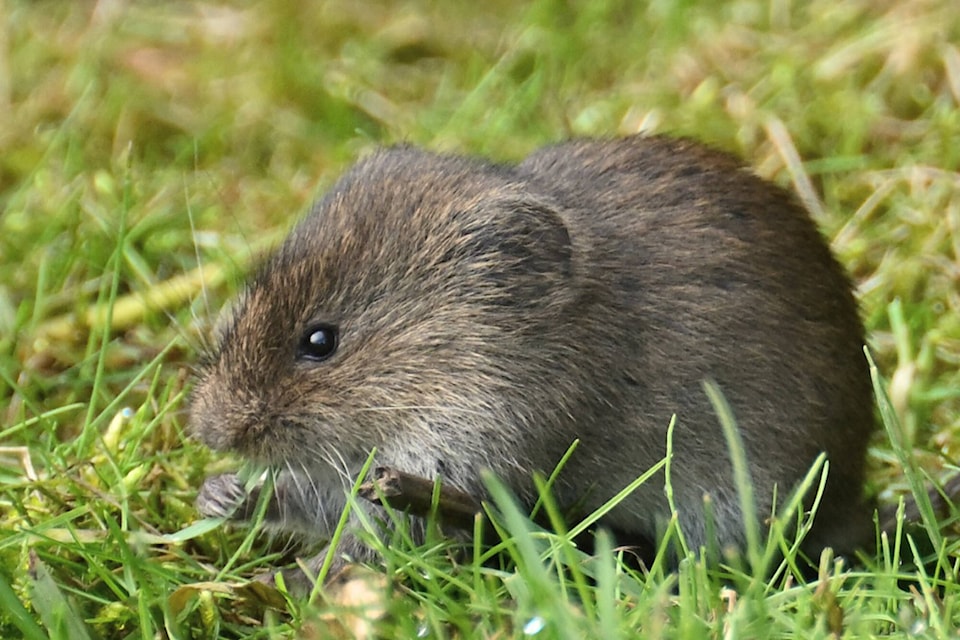By John G. Woods
Special to the Observer
As winter tightens its grip in the Shuswap, you may wonder how the hawks, owls and coyotes that patrol our icy shorelines and snow-covered fields can find anything to eat.
But if we could look into the snowpack, we’d find a lively system of snow tunnels made by one of our most abundant but rarely seen mammals — the meadow vole.
Also known as field mice, meadow voles are shaped like little sausages, with tiny ears, blunt noses and short tails. This body shape is in sharp contrast to our other common mouse, the deer mouse. Deer mice have slender bodies, big ears, sharp noses, and long tails.
If you are a gardener or an orchardist, you’ll likely know voles well. If you have a backcountry cabin or house, you’ll almost certainly have deer mice constantly trying to move in.
The list of predators that eat voles is a long one. Snakes, coyotes, weasels, red-tailed hawks, northern shrikes, and just about every type of local owl hunt for voles.
As vegetarians, voles eat grass and a host of other greenery and seeds. Converting plant matter into animal flesh, the voles in turn feed the predators.
A snowy shoreline without a vole population beneath its surface would have little to offer their predators higher up the food chain.
An individual vole that is only 16 centimetres long and weighs about 40 grams may seem like a very small morsel. However, voles have been known to reach densities of 300 in an area equivalent to a single football field. In a rough calculation, that could mean 120 kg (265 lbs) of these tiny creatures every kilometre of shoreline in Salmon Arm Bay!
Read more: Column: ‘Super powered’ western painted turtles re-emerge in the Shuswap
Read more: Column: ‘Fish ducks’ put on quite a show near Salmon Arm wharf
And what’s more, the biomass of voles can replenish itself by reproducing at a breathtaking rate. Female meadow voles have an average of about six pups every few weeks during the warm months of the year. These pups take only three weeks to mature and three weeks later can have a family of their own.
One scientist calculated that a single pair of meadow voles living under ideal conditions with no mortality and an abundance of food could have a million descendants in a year.
Of course, the real world is a challenging place and most voles have lifespans of only a few weeks or months. Predators, parasites, disease and food supply usually keep their populations far below their biological potential but vole numbers are known to occasionally explode.
I generally find a few dead or dying meadow voles each year along the Foreshore Trail. Most appear to have been injured by a predator and for some reason abandoned before they were completely eaten.
Although you rarely see the voles themselves, you can easily watch their predators searching for a meal. Last winter several Great Blue Herons spent the winter standing in the cattails just out from the hotel at the wharf. With the essentially no open water for herons to fish in, how did they survive? My guess was that they were eating voles. This was confirmed one day when a friend told me that she had just observed one of the herons with an unfortunate vole clamped in its bill.
newsroom@saobserver.net
Like us on Facebook and follow us on Twitter
Sign up for our newsletter to get Salmon Arm stories in your inbox every morning.
